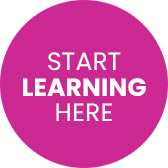Foundational Principles of Dual Language Learning and Development
Authors: Lisa White, Rebecca Bergey, Heather Quick (American Institutes for Research®)
This section lays out four key principles that are critical to know when working with Multilingual Learners and their families. We encourage educators to bring these perspectives to all the work they do in serving these children and their families.
Be sure to visit all three pages in this section, including Contexts & Conditions and Common Language Models.
Key terms:
Dual Language Learner (DLL): Children, birth to age 5, who come from homes where a language other than English is spoken. They may be learning two (or more) languages at the same time (simultaneous DLL), or start learning a second language while continuing to develop their first language (sequential DLL). (Based on the definition from the Dept. of Health & Human Services and Dept. of Education Joint Policy Statement.)
English Learner (EL): Students in the K–12 education system who have a home language other than English, and with levels of English proficiency that indicate the need for programs and services that will support them in becoming English proficient. (Based on the definition from Improving Education for Multilingual and English Learner Students: Chapter 1.)
Multilingual Learner (ML): An umbrella term that encompasses DLLs and ELs, as described above. (Based on the definition from Improving Education for Multilingual and English Learner Students: Chapter 1.)
Young children can acquire more than one language at once and achieve high proficiency in both languages. Young children, starting in infancy, have the capacity to learn more than one language simultaneously.3 Home language development plays an important role in English language development, and developing a language other than English does not impede English acquisition. Rather, a strong base in the home language can actually help facilitate English acquisition.4 The earlier that children are regularly exposed to two languages, the more likely they will be to develop bilingualism.5
Bilingualism is a strength. Bilingualism has linguistic, academic, cognitive, and sociocultural benefits.6 These benefits are most likely to occur when a child achieves high levels of competence in both the home language and English.7 Such benefits make it clear that bilingualism should be actively fostered and celebrated. For more information on how bilingualism benefits individuals, check out this infographic.
Strong partnerships and two-way communication with families are especially powerful for supporting ML children. Engaging in such communication in which teachers and families learn from each other can help build strong home-school partnerships.8 Families have assets and skills to bring to the classroom setting and important knowledge about the child and culture to share with teachers, and teachers can share important information about the child’s learning with families.9
Multilingual Learners benefit from high-quality instruction in both languages that is aligned with their language skills and background. ML children enter the classroom with language backgrounds that may or may not be shared with their classmates and teachers. It is the role of the teacher to learn about and understand best practices that they can use to promote these children’s learning. To gain this understanding, educators need to build their knowledge of dual language acquisition and instructional strategies that integrate content and language learning in both languages. In doing so, teachers cultivate an asset-based approach to instructing ML children (read more in Asset-Based Pedagogy: Chapter 2 in the CDE Research to Practice resource on Multilingual Learners). This approach also includes an intentional focus on cultural responsiveness and anti-bias training. Educators develop such understanding through professional development opportunities. These are most effective as part of continuous, content-focused, and job-embedded experiences.10
You can create your own personal resource library when you sign up for a free account. Get started!
Download the Multilingual
Learning Toolkit Overview




